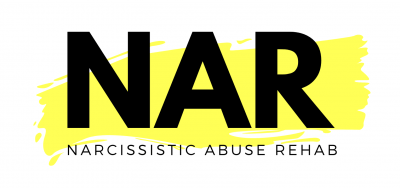In the often bewildering world of toxic relationships, understanding the dynamics at play can be crucial to one’s emotional well-being. One such dynamic that frequently arises is DARVO – an acronym for Deny, Attack, and Reverse Victim and Offender. This manipulation tactic is commonly employed by people who seek to escape being held to account for their actions and instead coerce their partners into submission. By denying any wrongdoing, attacking the accuser, and flipping the roles to portray themselves as the victim, toxic individuals effectively gaslight their victims, causing confusion, self-doubt, and further emotional harm. Decoding DARVO is essential for those caught in the intricate web of a manipulative relationship, as it sheds light on the tactics used to maintain control. In this article, we will delve into expressions of DARVO, explore real-life examples, and provide guidance on how to recognize and break free from its grip.
Understanding DARVO in Toxic Relationships
To truly understand the insidious nature of DARVO, it is necessary to examine each component: Deny, Attack, and Reverse Victim and Offender. The first step in this manipulation tactic is denial. Manipulators will vehemently refuse to acknowledge any responsibility for their actions, choosing instead to deflect blame onto the accuser or the circumstances surrounding the situation. By denying their wrongdoing, they attempt to invalidate the other person’s feelings and experiences, effectively erasing any accountability for their actions.
Next comes the attack. Once the manipulator has successfully denied any wrongdoing, they shift their focus to attacking the accuser. They may engage in verbal or psycho-emotional abuse, manipulation, or even gaslighting to destabilize the other person’s perception of reality. By attacking their opponent’s character, manipulators aim to discredit and undermine their claims, further reinforcing their control over the relationship.
Finally, manipulators employ the tactic of reversing the roles, portraying themselves as the victim and their partner as the offender. By flipping the narrative, they aim to elicit sympathy and support from others, effectively isolating the other person and turning them into the villain. This reversal of roles not only perpetuates the manipulation but also adds another layer of confusion and self-doubt for the victim, who may start questioning their own sanity and perception of reality.
Gaslighting: Manipulating Reality
At the heart of DARVO lies gaslighting – a form of psychological manipulation that seeks to distort a person’s perception of reality. Gaslighting is a powerful tool used by manipulative people to gain control over the people they wish to control. It involves tactics such as lying, withholding information, trivializing concerns, and distorting facts to make the victim doubt their own memory, perception, and sanity.
Gaslighting often starts subtly, with small discrepancies in the toxic individual’s words and actions. Over time, these inconsistencies escalate, leading the victim to question their own judgment and reality. Gaslighting can make the victim feel isolated, confused, and powerless, as their sense of self is eroded. This manipulation tactic is particularly effective in toxic relationships, as it leaves the victim dependent on the gaslighter for validation and a sense of reality.
Recognizing DARVO Patterns in Toxic Relationships
Being able to recognize the patterns of DARVO is crucial for anyone caught in a toxic relationship. Awareness of these tactics can help victims regain their sense of self and take steps towards breaking free from the cycle of manipulation. There are several signs to watch out for when decoding DARVO in a toxic relationship.
Firstly, pay attention to instances where the manipulative person consistently denies any responsibility for their actions, even when presented with evidence to the contrary. If they constantly shifts blame onto you or external factors, it may be a red flag for denial-based manipulation. Additionally, be wary of frequent personal attacks or belittling comments aimed at undermining your self-worth and credibility. Toxic individuals often employ these attacks to silence their victims and maintain control.
Another important indicator of DARVO is the reversal of roles. If your partner consistently portrays themselves as the victim, while painting you as the offender, it may be a sign of manipulation. Pay attention to how they twist events and narratives to elicit sympathy and support from others, effectively isolating you and undermining your credibility.
The Effects of DARVO on Victims
Experiencing DARVO in a toxic relationship can have devastating effects on the victim’s emotional well-being. The constant denial, attacks, and role-reversals can cause significant psychological harm, leading to feelings of confusion, self-doubt, and worthlessness. Victims may question their own sanity, as the gaslighting manipulates their perception of reality and erodes their confidence.
The emotional toll of DARVO can manifest in various ways, including anxiety, depression, low self-esteem, and a loss of trust in oneself and others. Victims may feel trapped, isolated, and unable to escape the toxic relationship. The longer the manipulation continues, the more difficult it becomes for the victim to break free and regain their sense of self.
Coping Strategies for Dealing with DARVO
While breaking free from DARVO and its grip in a toxic relationship is challenging, there are coping strategies that can help victims regain their power and take steps towards healing. Here are a few strategies to consider:
- Educate yourself. Learn about the tactics of DARVO and gaslighting so that you can recognize them when they occur. Knowledge is power, and understanding the manipulation tactics can help you regain control over your own narrative.
- Establish boundaries. Set clear boundaries with the toxic person and communicate your expectations. By clearly defining what is acceptable and what is not, you can protect yourself from further manipulation and create a healthier dynamic.
- Seek support. Reach out to trusted friends, family, or support groups who can provide a listening ear, validation, and guidance. Surrounding yourself with a supportive network can help counteract the isolation often imposed by toxic relationships.
- Practice self-care. Prioritize self-care activities that promote emotional well-being. Engage in activities that bring you joy, relaxation, and self-reflection. Taking care of your mental and physical health is essential in reclaiming your identity and rebuilding your self-esteem.
Seeking Help and Support After Toxic Relationships
Breaking free from a toxic relationship can be a daunting task, and seeking professional help is often crucial for victims to heal and recover. Therapists, counselors, and support groups specializing in toxic relationships can provide the necessary guidance and tools to navigate the challenges of escaping the manipulation and rebuilding one’s life.
If you find yourself in immediate danger or facing severe abuse, it is important to prioritize your safety. Reach out to local authorities or helplines that specialize in domestic violence for immediate assistance and support. See our resources page.
Healing and Recovery from DARVO Experiences
Recovering from the emotional trauma inflicted by DARVO and toxic relationships is a journey that requires time, patience, and self-compassion. Healing involves not only addressing the wounds caused by the manipulation but also rebuilding one’s sense of self and developing healthier relationship patterns.
Therapy can play a crucial role in this healing process. A trained therapist can help victims process their experiences, develop coping strategies, and rebuild their self-esteem. Through therapy, individuals can gain a deeper understanding of their own worth, learn to set healthy boundaries, and develop resilience in the face of manipulation.
Education and Awareness to Prevent DARVO
Preventing DARVO and toxic relationships starts with education and awareness. By understanding the tactics employed by manipulative individuals, we can create a society where these behaviors are not tolerated. Education should start at an early age, teaching young people about healthy relationship dynamics, boundaries, and the importance of consent.
Additionally, it is essential to destigmatize seeking help and support for toxic relationships. By encouraging open dialogue and providing accessible resources, we can empower victims to break free from the cycle of narcissistic abuse and seek the help they need to heal and rebuild their lives.
Conclusion
Decoding DARVO in toxic relationships is a necessary step towards understanding the manipulative tactics employed by toxic individuals. By recognizing the patterns of denial, attack, and role-reversal, victims can regain their power and take steps towards healing and recovery. It is important to seek support, set boundaries, and prioritize self-care in order to break free from the grip of DARVO. By promoting education and awareness, we can create a society that rejects toxic dynamics and supports those affected by them. Remember, you are not alone, and there is hope for a healthier, happier future beyond DARVO.






